#edward a. blatt
Explore tagged Tumblr posts
Text














Between Two Worlds (Edward A. Blatt, 1944).
30 notes
·
View notes
Text
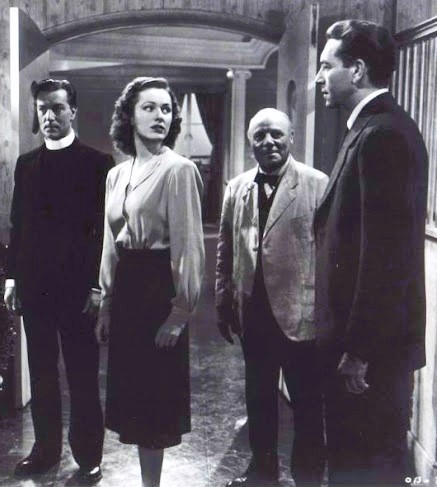
Dennis King-Eleanor Parker-Edmund Gwenn-Paul Henreid "Entre dos mundos" Between two worlds" 1944, de Edward A. Blatt.
3 notes
·
View notes
Text
Paul Henreid and John Garfield playing chess during production of Edward Blatt’s BETWEEN TWO WORLDS, which premiered in New York City 80 years ago today. Also starring Eleanor Parker and Sydney Greenstreet.
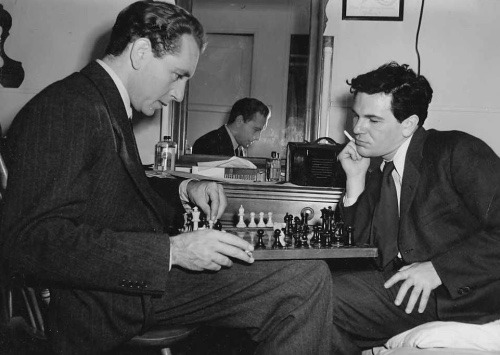
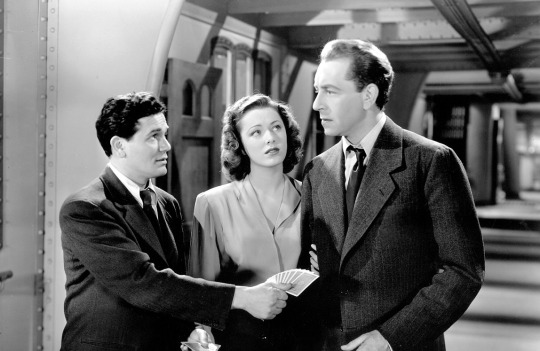
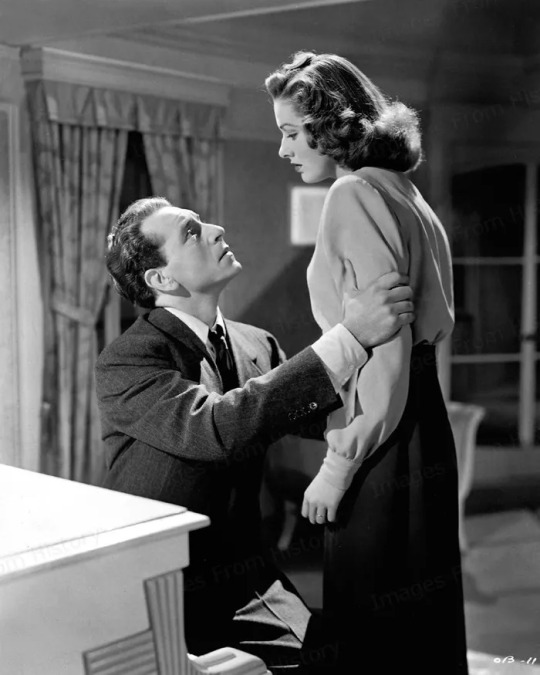
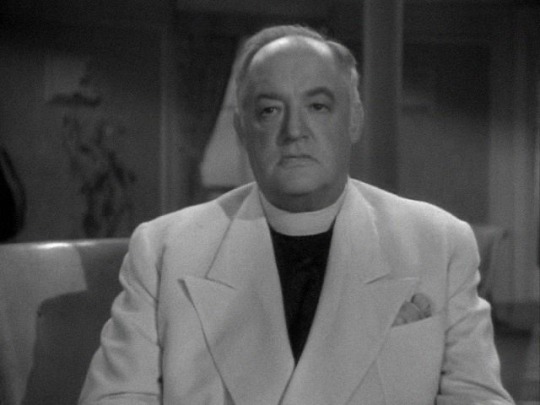
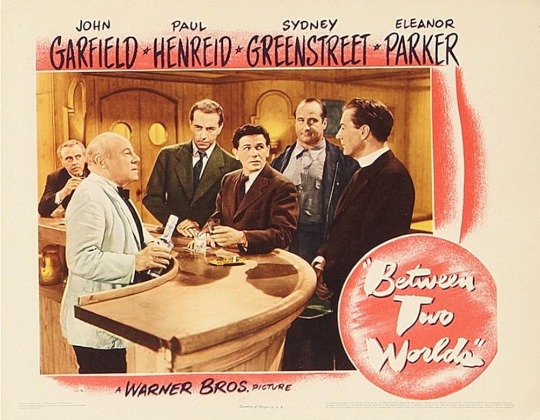
39 notes
·
View notes
Text
Anlass zur Hoffnung für Verfechter von Freiheitsrechten bot jüngst eine Abstimmung des Repräsentantenhauses: Der „Fourth Amendment Is Not For Sale Act“ passierte die republikanisch dominierte Kammer des Kongresses.
Im Demokratie-Ranking des Magazins The Economist firmieren die USA seit Jahren als flawed democracy. Die Gründe für diese Degradierung zur mangelbehafteten Demokratie, die das wirtschaftsliberale Blatt anführt, mögen fragwürdig sein, an der Diagnose an sich lässt sich kaum rütteln: Ein Überwachungsstaat kann nach demokratischen Maßstäben schwerlich als makellos durchgehen. Doch am 17. April dieses Jahres passierte wider Erwarten und gegen den Widerstand der Biden-Regierung der Gesetzesentwurf zum Fourth Amendment Is Not For Sale Act das Repräsentantenhaus.
Eine schon 2021 gestartete Initiative zur Verteidigung des vierten Zusatzartikels zur Verfassung der Vereinigten Staaten hatte damit einen Etappensieg erzielt. Besagter Verfassungszusatz verbrieft den Schutz vor willkürlicher Durchsuchung, Beschlagnahme und Verhaftung – solche Maßnahmen dürfen nur aufgrund von Gerichts- oder Magistratsverfügungen erfolgen, die auf stichhaltigen Gründen basieren.
Schön wär’s. 2013 machte Edward Snowden die wohl größte und erfolgreichste Public-private-Partnership überhaupt publik, eine Maschinerie der Massenüberwachung, in der das Räderwerk von Geheimdiensten und IT-Konzernen höchst wirkungsvoll verzahnt ist. Die Akteure auf der privatwirtschaftlichen Seite waren allerdings nicht allesamt mit Enthusiasmus bei der Sache, von Yahoo – damals noch ein Konzern von einiger Bedeutung – ist sogar heftiger Widerstand gegen das Ansinnen belegt, die eigene Kundschaft systematisch zu bespitzeln.
Solche Betriebsstörungen dürften in den zurückliegenden Jahren nicht ins Gewicht gefallen sein, denn seit Snowdens Enthüllungen ist vieles besser geworden – für die Überwacher, nicht für die Bürger der Vereinigten Staaten. Längst ist man in den USA dazu übergegangen, Datenbestände en gros von Data Brokers zu kaufen, statt sie Unternehmen mit geheimen Anordnungen abzupressen. Und wieder einmal beweist der Markt seine Überlegenheit, in diesem Fall eben beim Umgehen des vierten Verfassungszusatzes.
Standortdaten, Kreditkarteninformationen, Gesundheitsdaten, Hinweise auf politische Ansichten und mehr wurden zuhauf von staatlichen Stellen erworben; Polizeibehörden, die Bundessteuerverwaltung IRS, diverse Organisationen des Militärs, das FBI, die NSA gehörten zu denen, die zugriffen. Mit dem Outsourcing der Überwachung sei man aus dem Schneider, so das Kalkül, schließlich verbiete der vierte Zusatzartikel der Verfassung nur willkürliche Ausforschung der Bürger durch den Staat, nicht die durch privatwirtschaftliche Unternehmen, die dann als Lieferanten für den Staat fungieren.
Dieser Praxis, die demokratischem Verständnis offen Hohn spricht, soll mit dem Fourth Amendment Is Not For Sale Act nun ein Riegel vorgeschoben werden. Konkret läuft das auf folgende Einschränkungen hinaus:
– Staatliche Stellen sollen nur auf Gerichtsbeschluss an Datenbestände von Datengroßhändlern (Data Brokers) gelangen, so wie es einschlägige Gesetzgebung schon fordert, wenn es um Telefongesellschaften oder Internet-Service-Anbieter geht.
– Polizeibehörden und Geheimdiensten wird der Erwerb der Daten von Personen in den USA und US-Bürgern im Ausland untersagt, wenn diese Daten aus einem Nutzer-Account oder von einem persönlichen Gerät stammen oder mittels Täuschung, Hacks, Vertragsverletzungen, Verstoß gegen Datenschutzhinweise oder Allgemeine Geschäftsbedingungen gewonnen wurden.
– Ausdrücklich ausgeschlossen als Datenlieferant für staatliche Stellen wird Clearview AI, ein Unternehmen, das Milliarden von Porträtfotos per Screen Scraping aus dem Web bezogen hat und aktuell mit zahlreichen Ermittlungsbehörden in den USA (und nicht nur dort) für Gesichtserkennung im Geschäft ist.
– Bestehende Gesetze zum Schutz der Privatsphäre sollen auf Unternehmen erweitert werden, die über Kabelnetze und Mobilfunkinfrastruktur verfügen.
– Gesetzeslücken werden geschlossen, die es Geheimdiensten erlauben, Metadaten von grenzüberschreitender Kommunikation amerikanischer Bürger zu kaufen oder anderweitig zu beschaffen. Gleiches gilt für Daten, die beim Besuch ausländischer Websites anfallen.
Diensteanbieter und andere Dritte verlieren ihre bisher durch das Justizministerium garantierte Immunität bei Beihilfe zu Überwachung, die nicht gesetzlich gefordert oder erlaubt ist. Insgesamt ergibt sich so ein recht pralles Paket von Schutzmaßnahmen der Privatsphäre, geschnürt von Politikern der Demokratischen Partei als auch von Republikanern. Unter letzteren ist der libertäre Senator für Kentucky Rand Paul die wohl prominenteste Figur, bei den demokratischen Initiatoren ist Ron Wyden, Senator für Oregon und langjähriger Kämpfer gegen staatliche Überwachung, besonders hervorzuheben.
Seit 2021 stießen sie und andere Unterstützer des Gesetzesentwurfs auf hartnäckigen Widerstand aus Politik, von Ermittlungsbehörden und Geheimdiensten. Das Justizministerium ließ wissen, dass der Fourth Amendment Is Not For Sale Act den Ankauf von personenbezogenen Standortdaten unterbinden würde und damit die Möglichkeiten einschränke, vermisste Kinder aufzufinden, flüchtige Strafgefangene zu jagen oder gegen organisiertes Verbrechen zu ermitteln. Die National Sheriffs Association verbuchte die Vorlage kurzer Hand unter „Machtzuwachs für die Drogenkartelle“.
Und natürlich durfte in Zeiten geopolitischer Frontbildung auch der Hinweis nicht unterbleiben, dass es ein himmelschreiendes Unrecht sei, wenn dem amerikanischen Staat der Zugang zum heimischen Datenhandel unterbunden werde, für Russland und China aber weiterhin die Möglichkeit bestünde, sich gegen Bezahlung bei Data Brokers einzudecken. Doch offensichtlich ließ sich die Mehrheit Im Repräsentantenhaus selbst von diesem Einwand nicht schrecken: Am 17. April stimmten 219 von ihnen für den Fourth Amendment Is Not For Sale Act, 199 dagegen. Damit ist allerdings nur die Voraussetzung dafür geschaffen, dass nun im Senat über den Gesetzesentwurf entschieden wird.
Es steht eine Zitterpartie bevor. In dieser Kammer des Kongresses verfügen die Demokraten über eine knappe Mehrheit, was allerdings alles andere als eine Gewähr für demokratische Umtriebe ist: So billigte der Senat am 20. April 2024 eine zweijährige Verlängerung des Abschnitts 702 des Foreign Intelligence Surveillance Act (FISA), der einen Stützpfeiler der US-Massenüberwachung darstellt.
Um es mal positiv zu formulieren: Dem ausstehenden Entscheid über den Fourth Amendment Is Not For Sale Act darf mit Spannung entgegengesehen werden.
0 notes
Text
Índices de la revista Unión y Amistad, publicada entre 2012 / 2015

Unión y Amistad #1
Un artefacto de comunicación desde el Club Editorial Río Paraná Año 1, número 1, otoño 2012 Refinería, Rosario, Argentina Imagen de tapa: Maxi Masuelli
Colección brillo de poesía joven. Poemas de Alejandra Benz, Julia Enríquez, Agustín González y Virginia Negri
Ana María Ibáñez “La Cenicienta de la película” (poesía)
Julián Bejarano y Manuel Podestá “Somos jugadores de fútbol fracasados que intentan tirar fantasías editoriales” (poesía)
Nicolás Domínguez Bedini “Poesía inédita. Yo nunca estuve en África”
Osvaldo Aguirre “En 1969 Mario Levrero pasó tres meses en Rosario”
Guo Cheng “Comunicado de Guo Cheng”
Damián Ríos “Desbunde y felicidad es una declaración de amor y de fidelidad absoluta” (comentario sobre el libro Desbunde y felicidad de Cecilia Palmeiro)
R. R. Montes i Bradley (editor de la revista Paraná) “Río que une i no divide”
Éditions du cochon “Cómo será la laguna que el chancho la cruza al trote!”
Delfo Locatelli. Conservación con Claudia del Río “Del Litoral no queda nada, Domínguez lo hizo todo”
Octavio Garabello “Intensidad, agitación y calma. Una temporada en Amaicha del Valle” (crónica)
Maxi Masuelli “El hermano luminoso. Ricky Espinosa, año 1999”
Enzo Nuñez “Retratos”
Amadeo Gonzáles “Grabaciones artesanales y los fanzines que se resisten a desaparecer” (entrevista)
Biblioteca Popular D.G.Ponti Lagarde “Una biblioteca con un 80% de autores vivos y en plena producción”
Unión y Amistad #2
Un artefacto de comunicación desde el Club Editorial Río Paraná Año 1, número 2, primavera 2012 Imagen de tapa: Jeremías Amaya
Francisco Garamona “El grado cero de las cosas. Entrevista a Raúl Escari”
Irina Garbatzky “¡Me gustaba tanto escribirte!” (reseña de Arrivederci amor mío de Agustín González)
Mariano Blatt, Alfredo Jaramillo y Pablo Katchadjian “Tres hombres en un bote”
Lila Siegrist y Georgina Ricci “Corazón valiente! Conozcamos a la editorial Yo soy Gilda”
Daiana Henderson “Como el recorrido de un hilo de oro” (poesía)
María Guerrieri “Desperté hecha un águila” (poesía y dibujo)
L.I.M.A.L Laboratorio de Investigación Mario Levrero
Biblioteca Popular D.G.Ponti Lagarde “Tesoro de la biblioteca: Norah Borges en Martín Fierro. Un cuadro sinóptico de la pintura” (póster)
Fernando Callero y Santiago Pontoni “Necesito amor en estado líquido” (poesía)
Tomás Boasso “¡Festejamos por lo inédito y por lo publicado!” (poesía)
Gustavo López “Liga de poesía bahiense” (poemas de Fabián Alberdi, Germán Arens, Mariela Gouiric, Nicolás Guglielmetti y Carolina Rack)
Pauline Fondevila “Los peces cantarán, las flores fumarán. Enciclopedia del náufrago”
Sociales del Club Editorial Río Paraná
Unión y Amistad #3
Un artefacto de comunicación desde el Club Editorial Río Paraná Año 2, número 3, otoño 2013 Imagen de tapa: Juan Hernández
Ernesto B. Rodríguez “Anécdotas y peripecias de Juan Grela”
Agustín González “Esperando por los cuentos de Corazón”
Francisco Garamona entrevista a Jacoby “¿Existe la obra de Jacoby?”
Julia Enríquez “Poemas de un conductor de ambulancias” (traducción de poemas de Edward Cummings)
Cristhian Monti “Que no toque el piso” (plaqueta desmontable de poesía)
Damián Ríos “Otra vez que vino a mi cabeza el dibujo”
Ana Wandzik “Las populares tapas de Longo y amigos”
Unión y Amistad #4
La revista del Club Editorial Río Paraná Año 2, número 4, primavera 2013 Imagen de tapa: Ariel Costa
Pauline Fondevila “Escribo para no suicidarme” (texto sobre Édouard Levé)
Kiwi “Salir a cazar poemas” (poesía)
Raúl Martínez “Notas sobre Leo Gambartes”
Alejandra Benz “Un rato de diversión” (plaqueta desmontable de poesía)
Jorge Mario Varlotta Levrero “El llanero solitario” (historieta inédita)
Fernanda Laguna, Francisco Garamona y Mumi “Bocetos para el Manifiesto del Arte del Futuro”
Unión y Amistad #5
La revista del Club Editorial Río Paraná Año 3, número 5, otoño 2014 Imagen de tapa: Claudia del Río
Daiana Henderson “Sobre Al rayo del sol de Fernando Callero”
Cristhian Monti “Sobre El entusiasmo de Tomás Boasso”
Francisco Gandolfo “¡Por siempre Gandolfo!” (relatos)
Diego Vdovichenko “Yendo de una ventana a otra” (poesía)
Pablo Montini “Espiga, letras y artes”
Coti Alberione “Payasitas” (dos pinturas)
Lila Siegrist “No se ve, o lo que se calla”
Virginia Negri “Un cuento del medio del monte” (cuento ilustrado por Maxi Masuelli)
Unión y Amistad #6
La revista del Club Editorial Río Paraná Año 3, número 6, primavera 2014 Imagen de tapa: Alejandro Rosetti
Santiago Beretta “La búsqueda silenciosa. Entrevista a Rodolfo Elizalde”
Alejandra Benz (miembro de L.I.M.A.L.) “¡Salud, compañero Mario!”
Jonatan Santos “Poemas infinitos”
Juan Laxagueborde “La obra pública de Lucas Martí”
Maxi Masuelli “T.R.I.P.A. Trabajo de Registro e Investigación sobre Paisaje Argentino” (plaqueta desmontable)
Nicolás Moguilevsky “En las mañanas de Argentina” (poesía)
Delfo Locatelli “La pintura. La forma. El dibujo” (ensayo)
Cristhian Monti “Hablemos de Folk” (reseña de Folk de Bernardo Orge)
Unión y Amistad #7
La revista del Club Editorial Río Paraná Año 4, número 7, otoño 2015 Imagen de tapa: Maxi Masuelli (con dibujo original en birome)
José Villa “Una ilusión objetiva” (reseña de La misma llama de Darío Cantón)
Francisco Bitar “Por la gracia de lo vivido y lo visto. Poemas de Charles Reznikoff” (traducción)
Carla Colombo, dibujos
Augusto Munaro “Vida de Santiago Dabove” (plaqueta desmontable)
Juan Laxagueborde y Santiago Villanueva “Conversación por zona Parque Rivadavia. Breve diálogo de interpretación”
María Salgado “Yo no soy más que mi deseo” (poesía)
Minireseñas “Una casa y un tambor de Pauline Fondevila por Damián Ríos” y “El libro de cuentos de Corazón de Agustín González por Rosario Bléfari”
Silvia Lenardón “Banda” (historieta)
Contratapa de Silvia Lenardón
1 note
·
View note
Text
HIS5067 - Lit Review/Discussion Prep #11
What is the responsibility of mass media in the representation of “accurate” history? This week’s readings focused on media, primarily film, in the ongoing discourse surrounding representative history, national identity, and social and environmental justice. Grounded by the approaches introduced by Thomas Cauvin (Public History: A Textbook of Practice), I reflect on the perspectives illustrated in director Ken Burns’s documentary series The National Parks: America’s Best Idea and the critical responses published in a special issue of The Public Historian. Additionally, I examine the impact of film on the representation of slavery in the United States through the scholarship of Natalie Zemon Davis and the critiques of Kate Masur and Eric Foner.
In chapter 7 (“Radio and Audio-Visual Production”), Cauvin focuses on the production of history in media including radio, television, and film. He argues that public historians, given their work within sectors of public engagement, are “more armed” than other aspects of the discipline to engage with media (Cauvin 2016, 163), but that their role must go beyond serving as consultants for projects and lean into actively producing media programs as well (Cauvin 2016, 164). This assertion is based on a distinction he makes between a historian’s emphasis on complexity and a filmmaker’s focus on generalization (Cauvin 2016, 165). The latter’s approach is exemplified in the work (and critique) of filmmaker Ken Burns.

In 2009, Burns directed The National Parks: America’s Best Idea -- a twelve-episode documentary on the development and federalization of national parks. Burns’s aggrandizing approach to nature as a concept centers on the activism of figures like John Muir, contextualizing lives and lobbying efforts within the socioeconomic climate of tourism and industrialization. Burns’s approach is characterized by the use of primary sources including written accounts and photographs. However, as scholars such as Martin Blatt, Edward Linenthal, Karl Jacoby, Brenda Child, and Cindy Ott illustrate in The Public Historian, one must consider the limitations of the series and its attempt at accuracy. As Linenthal argues, “while the film succeeds in portraying conflicts at places such as Yellowstone and Yosemite, it does not succeed in bringing viewers into the gritty on-the-ground realities of interpretation” (Linenthal 2011, 15). This incomplete view is due to Burns’s overwhelming focus on middle and upper class white men -- an approach that largely leaves out the contributions of Native Americans, African Americans, Japanese Americans, and women out of the discourse. “It would have been more preferable to acknowledge” as Jacoby argues, “the extent to which the national parks do not exist outside of time and history but rather reflect our very human struggle over the North American landscape” (Jacoby 2011, 23).
The remaining readings focus on the fictionalized histories of African Americans in the films Lincoln (2012), Amistad (1997), and Beloved (1998). Hollywood films based on true events must often reconcile historical accuracy with entertainment. This negotiation is not always successful, with Lincoln standing out for its inaccurate glorification of Abraham Lincoln (Foner 2012) and the marginalization of Black figures critical in the Union’s cause (Masur 2012). Kate Masur argues that her issue with director Steven Spielberg’s film is not accuracy but an “interpretive choice” that reinforces notions of white agency and power (Masur 2012). Natalie Zemon Davis argues that films, in contrast to literature, are a relatively new medium for the construction, interpretation, and consumption of history (Davis 2011, 5). As a result, films based on Black trauma and resistance, such as Amistad and Beloved, must be grounded in frameworks of transparency and inclusion (Davis 2011, 10 – 11).
Bibliography
Blatt, Martin, Edward Linenthal, Karl Jacoby, Brenda Child, and Cindy Ott “Roundtable: Ken Burns’s ‘The National Parks: America’s Best Idea,’” The Public Historian 33:2 (May 2011): 9-36.
Burns, Ken. The National Parks: America’s Best Idea, 2009. https://video.alexanderstreet.com/channel/the-national-parks-america-s-best-idea.
Cauvin, Thomas. Public History: A Textbook of Practice. New York, NY: Routledge, 2016.
Davis, Natalie Zemon. Slaves on Screen: Film and Historical Vision. Random House of Canada, 2011.
Foner, Eric. “Lincoln’s Use of Politics for Noble Ends: [Letter].” New York Times, Late Edition (East Coast), November 27, 2012, sec. A.
Masur, Kate. “In Spielberg’s ‘Lincoln,’ Passive Black Characters.” The New York Times, November 13, 2012.
0 notes
Photo
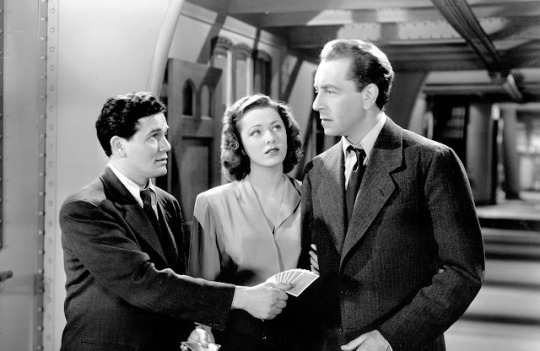


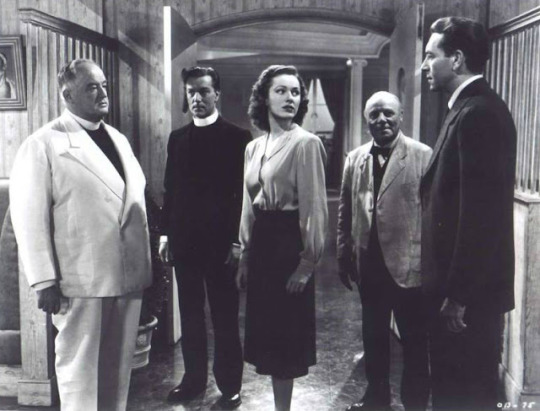
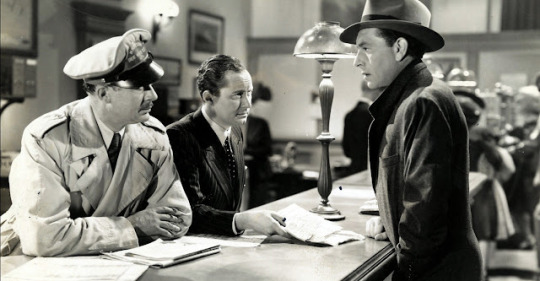

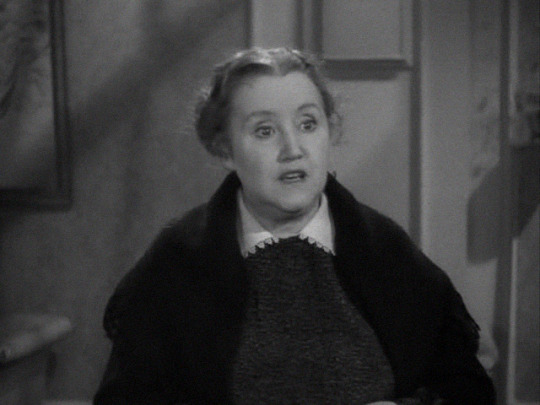
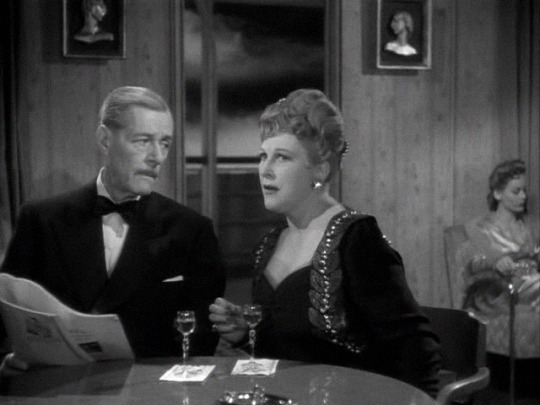
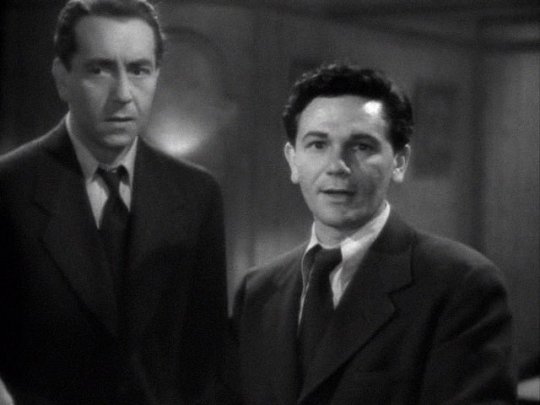

Between Two Worlds (Edward A. Blatt, 1944) Cast: John Garfield, Paul Henreid, Sydney Greenstreet, Eleanor Parker, Edmund Gwenn, George Tobias, George Coulouris, Faye Emerson, Sara Allgood, Dennis King, Isobel Elsom, Gilbert Emery. Screenplay: Daniel Fuchs, based on a play by Sutton Vane. Cinematography: Carl E. Guthrie. Art direction: Hugh Reticker. Film editing: Rudi Fehr. Music: Erich Wolfgang Korngold. Sutton Vane's old warhorse of a play Outward Bound made its debut on Broadway in 1924 and became a community theater staple for many years after. It's a fantasy about the afterlife, in which passengers on a ship gradually come to realize that they're dead and will be judged by a man known as the Examiner, who will send them to their just deserts. Warner Bros. filmed it in 1930 with Leslie Howard as the cynical newspaperman Tom Prior and Douglas Fairbanks Jr. as the suicidal Henry, a role Howard had played on stage. In 1944 the studio decided it was time for a remake that would update the story to the war years: A group of people are desperate to get out of England during the Blitz and decide to risk sailing to America. Among them is Henry Bergner, a concert pianist who has been part of the Resistance in France but whose nerves have been shattered so that he can't take it anymore. When he's turned down because he doesn't have an exit permit, he decides to kill himself, so he returns to the flat he shares with his wife, Ann (Eleanor Parker), seals the windows shut, and turns on the gas. But Ann has pursued him to the steamship office, and when she finds out he has just left, she rushes into the street just in time to see a car carrying people who have successfully booked passage -- we have been introduced to them earlier -- blown to bits. She hurries on to the flat and discovers what Henry has done, so she decides to join him in death. Cut to the ship, where she and Henry join the people who have just been blown up. Henry and Ann realize that they're dead, but they're advised by the ship's steward, Scrubby (Edmund Gwenn), not to let the others know just yet. And so it goes, as the passengers gradually awake to the truth of their condition and undergo judgment by the Examiner, who was once an Anglican clergyman. Sydney Greenstreet plays him with his usual affably sinister manner -- in his scenes with Henreid it's a bit like watching Victor Laszlo being judged by Kasper Gutman. The bad people -- an arrogant capitalist played by George Coulouris and a snobbish society dame played by Isobel Elsom -- get dispatched to punishment; the sinful but worthy -- Garfield's raffish journalist and Faye Emerson's conscience-stricken playgirl/actress -- are provided with a measure of redemption. And then there are the suicides, Henry and Ann. It's revealed that their lot is to serve aboard these postmortem ships for eternity, like the steward Scrubby, who had killed himself. Since condoning suicide was taboo, especially under the Catholic-administered Production Code, the script has to provide an out for the attractive, repentant couple, and it does. There's a lot of stiff acting in the movie -- Garfield's is the only really naturalistic performance -- and the dialogue is full of heavy-handed exposition speeches. The capitalist and the socialite never rise above caricature, and there's a sentimental tribute to mother love. This is the first of only three films directed by Edward A. Blatt, and it's easy to see why there weren't more.
#Between Two Worlds#Edward A. Blatt#John Garfield#Paul Henreid#Eleanor Parkter#Sydney Greenstreet#Edmund Gwenn#Faye Emerson
1 note
·
View note
Photo










Between Two Worlds 1944
#Between Two Worlds#1944#edward a. blatt#adaptation pièce de théatre#donc plof plof#john garfield#sydney greenstreet#eleanor parker#4/10
2 notes
·
View notes
Photo

Paul Raphael Meltsner (1905-1966), ''Harlam'', 1929 Source
#paul raphael meltsner#american artists#american painters#harlam#playbills#cover art#wallace thurman#edward a. blatt#William Jourdan Rapp#theater advertisements#theater magazines#vintage illustration#vintage art
112 notes
·
View notes
Text

Brian Aherne-Constance Bennett "Smart woman" 1948, de Edward A. Blatt.
2 notes
·
View notes
Text

John Garfield and Faye Emerson behind the scenes of Edward Blatt’s BETWEEN TWO WORLDS (1944)
41 notes
·
View notes
Photo

Paul Henreid, Eleanor Parker, George Coulouris, John Garfield, Sara Allgood, and Isobel Elsom in BETWEEN TWO WORLDS (’44)
#Between To Worlds#John Garfield#Paul Henreid#Eleanor Parker#George Coulouris#Sara Allgood#Isobel Elsom#Edward A. Blatt
24 notes
·
View notes
Photo








Picturing Summer, a Solstice Celebration
Irene Gallo These are some pictures that came out to me from this wonderfull selection of sumer art while trying to get warm.
The names of the artists and the artworks are in the articles.
Αυτές είναι καποιες απ τις εικονες που μου μίλησαν απ τη μεγαλη συλλογη του αρθρου.
Τα ονοματα των καλλιτέχνων και των έργων ειναι στο αρθρο.
#τεχνη#καλοκαιρι#καλοκαίρι#πινακες#ζωγραφική#art#summer#paintings#beutifull#warm#ζεστη#Lyonel Feininger#Ben Blatt#Shaun Tan#Jeff Jones#Edward Hopper#Joaquín Sorolla#alexander kavensky#van goh
1 note
·
View note
Photo

Love this ! From a 1975 issue of the german magazine Neue Blatt.
#1970s#1975#joan bennett kennedy#joan kennedy#ted kennedy#EMK#Edward M. Kennedy#Patrick Kennedy#kara kennedy#Ted Kennedy Jr.#Neue Blatt#Magazine#Article
10 notes
·
View notes
Text
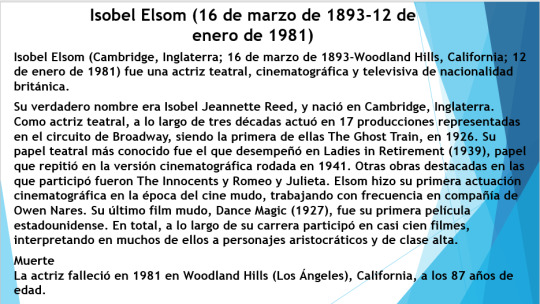
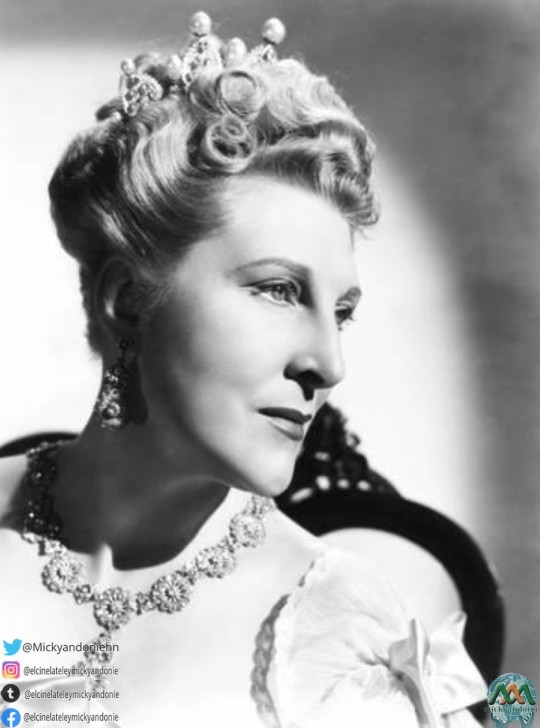

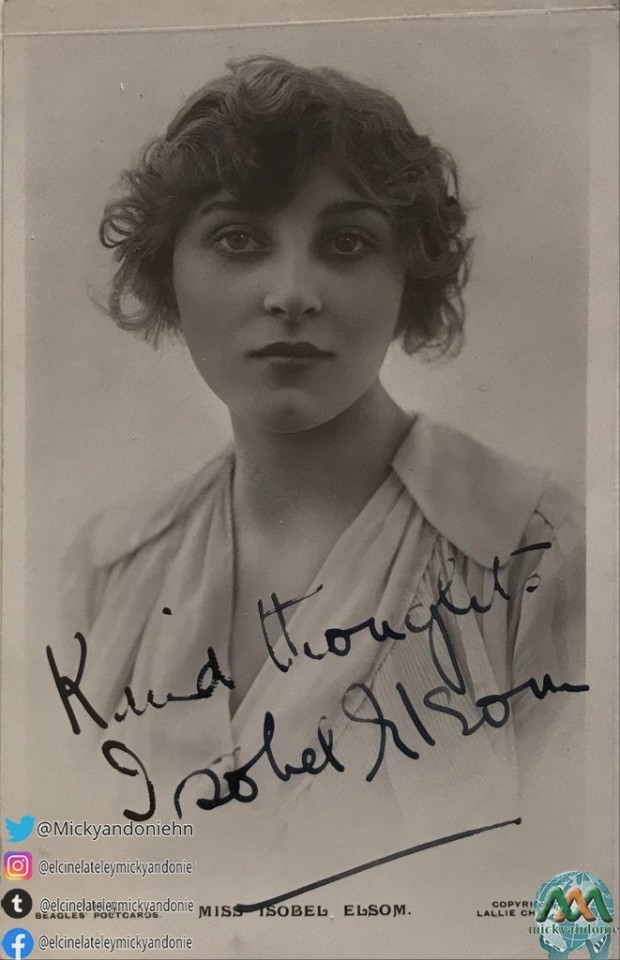
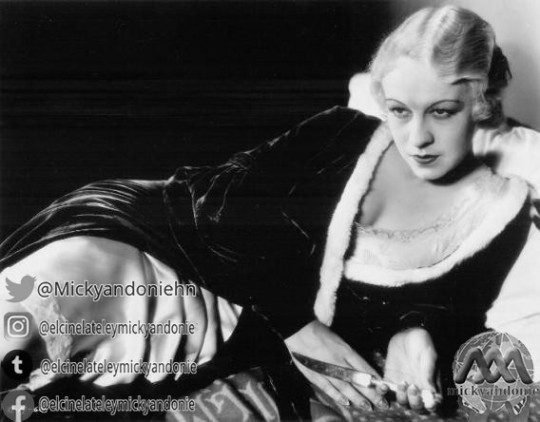

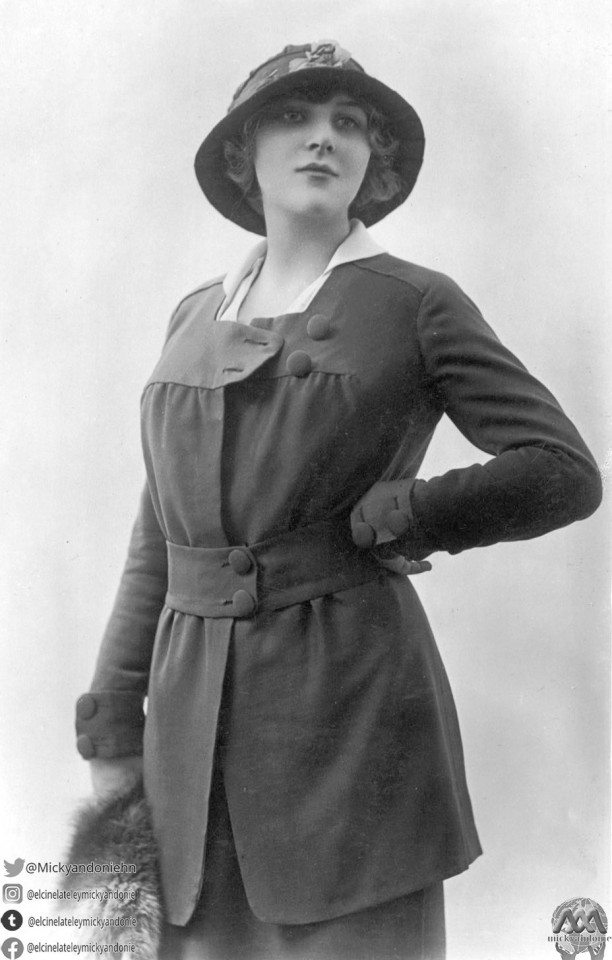
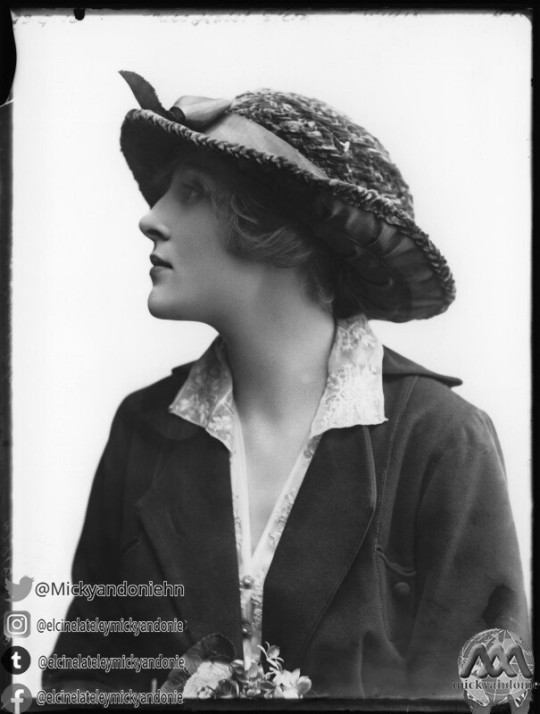
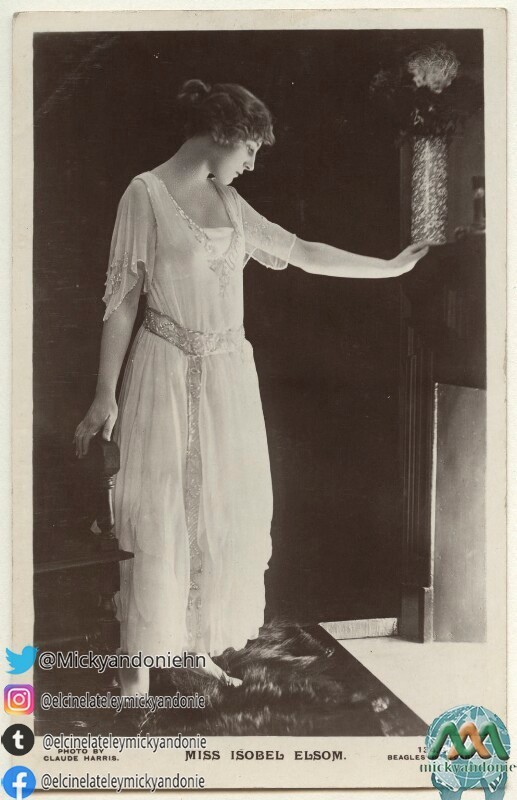
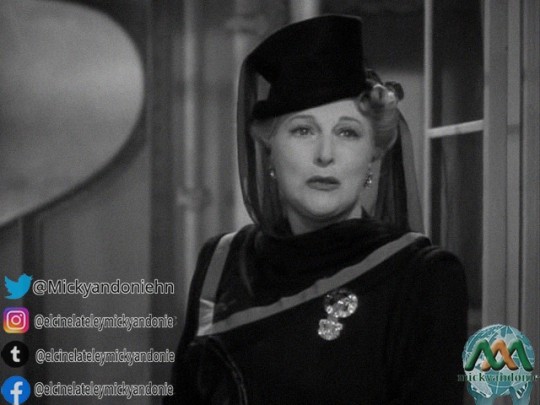
Isobel Elsom.
Filmografía
Teatro
1917-1918 : The Freaks, de Arthur Wing Pinero, con C.V. France y Leslie Howard (Londres)
1920-1921 : Up in Mabel's Room, de Wilson Collison (Londres)
1922-1923 : Sweet Lavender, de Arthur Wing Pinero (Londres)
1923-1924 : The Green Goddess, de William Archer, con George Arliss, Ivan F. Simpson (Londres)
1926 : The Ghost Train, de Arnold Ridley, con Eric Blore, Claudette Colbert
1927 : The Mulberry Bush, de Edward Knoblauch, con Claudette Colbert
1927 : People don't do such Things, de Lyon Mearson y Edgard M. Schoenberg, con Stanley Logan
1928 : The Silver Box, de John Galsworthy, con Mary Forbes
1928 : The Behavior of Mrs. Crane, de Harry Segall, con Walter Connolly y Charles Trowbridge
1928 : The Outsider, de Dorothy Brandon
1938-1939 : American Landscape, de Elmer Rice, con Charles Dingle y Charles Waldron
1940 : Ladies in Retirement, de Reginald Denham y Edward Percy, con Flora Robson
1942 : The Flowers of Virtue, de Marc Connelly, con Frank Craven, Thomas Gomez y Vladimir Sokoloff
1944-1945 : Hand in Glove, de Charles K. Freeman y Gerald Savory, dirección de James Whale
1950 : The Innocents, de William Archibald, con música de Alex North
1950 : The Curious Savage, de John Patrick, con Lillian Gish
1951 : Romeo y Julieta, de William Shakespeare, con Olivia de Havilland y Jack Hawkins
1952 : The Climate of Eden, de Moss Hart
1954m : The Burning Glass, de Charles Langbridge Morgan, con Cedric Hardwicke y Walter Matthau
1957 : Hide and Seek, de Roger McDougall y Stanley Mann, con Barry Morse y Basil Rathbone
1957 : The First Gentleman, de Norman Ginsbury, con Walter Slezak.
Cine
1915 : A Prehistoric Love Story, de Leedham Bantock (corto)
1916 : Milestones, de Thomas Bentley
1918 : The Man who won, de Rex Wilson
1918 : The Way of an Eagle, de G.B. Samuelson
1918 : The Elder Miss Blossom, de Percy Nash
1919 : Hope, de Rex Wilson
1919 : Quinneys, de Maurice Elvey y Herbert Brenon
1920 : Aunt Rachel, de Albert Ward
1921 : For her Father's Sake, de Alexander Butler
1922 : A Debt of Honour, de Maurice Elvey
1922 : The Game of Life, de G.B. Samuelson
1923 : The Harbour Lights, de Tom Terriss
1923 : The Wandering Jew, de Maurice Elvey.
1924 : Who is the Man ?, de Walter Summers
1924 : The Love Story of Aliette Brunton, de Maurice Elvey
1925 : The Last Witness, de Fred Paul
1925 : Le Réveil, de Jacques de Baroncelli
1926 : The Tower of London, de Maurice Elvey
1927 : Tragödie einer Ehe, de Maurice Elvey
1927 : Dance Magic, de Victor Halperin
1931 : The Other Woman, de G.B. Samuelson
1932 : The Crooked Lady, de Leslie S. Hiscott
1933 : The Thirteenth Candle, de John Daumery
1934 : The Primrose Path, de Reginald Denham
1941 : Ladies in Retirement (El misterio de Fiske Manor), de Charles Vidor
1942 : Eagle Squadron, de Arthur Lubin
1942 : Laugh your Blues away, de Charles Barton
1942 : Seven Sweethearts, de Frank Borzage
1942 : You were never Lovelier (Bailando nace el amor), de William A. Seiter
1943 : Forever and a Day (Siempre y un día), de Edmund Goulding y Cedric Hardwicke
1944 : Between two Worlds (Entre dos mundos), de Edward A. Blatt
1944 : Casanova Brown, de Sam Wood
1945 : The Unseen (Misterio en la noche), de Lewis Allen
1946 : Two Sisters from Boston, de Henry Koster
1946 : Of Human Bondage, de Edmund Goulding
1947 : Addio Mimi !, de Carmine Gallone
1947 : The Two Mrs. Carrolls (Las dos señoras Carroll), de Peter Godfrey
1947 : Monsieur Verdoux, de Charlie Chaplin
1947 : El fantasma y la señora Muir, de Joseph L. Mankiewicz
1947 : Ivy, de Sam Wood
1947 : Escape Me Never, de Peter Godfrey y LeRoy Prinz
1947 : The Paradine Case, de Alfred Hitchcock
1948 : Smart Woman, de Edward E. Blatt
1949 : The Secret Garden, de Fred M. Wilcox
1954 : Desirée, de Henry Koster
1954 : Deep in my Heart, de Stanley Donen
1955 : The King's Thief, de Robert Z. Leonard
1955 : La colina del adiós, de Henry King
1956 : Over-exposed, de Lewis Seiler
1956 : 23 Paces to Baker Street (A 23 pasos de Baker Street), de Henry Hathaway
1956 : El loco del pelo rojo, de Vincente Minnelli
1957 : The Guns of Fort Petticoat, de George Marshall
1958 : Rock-a-bye Baby (Yo soy el padre y la madre), de Frank Tashlin
1959 : The Young Philadelphians (La ciudad frente a mi), de Vincent Sherman
1959 : The Miracle (Promesa rota), de Irving Rapper
1960 : The Bellboy, de Jerry Lewis
1961 : The Errand Boy.
1961 : The Second Time Around (Sola ante el peligro), de Vincent Sherman
1963 : Who's minding the Store ? (Lío en los grandes almacenes), de Frank Tashlin
1964 : My Fair Lady, de George Cukor
1964 : The Pleasure Seekers, de Jean Negulesco.
Créditos: Tomado de Wikipedia
https://es.wikipedia.org/wiki/Isobel_Elsom
#HONDURASQUEDATEENCASA
#ELCINELATELEYMICKYANDONIE
10 notes
·
View notes
Text
Every country has its own unique history. Danniyore has its warrior history, ruling with military precision. Suedwen is full governed by tactical and sly leaders and so on forth.
My country, or shall I say my duchy, is no different from them. It is small, yes but it is bustling with life and trading, so much so that the neighbouring principality of Blatt has waged wars and skirmishes with us.
I am Elisabeth, the first reigning Duchess of Edni. Daughter to Edward I and Princess Marie of Danniyore. I inherited my father's duchy when I was six, after he was assassinated by my uncle, his own brother Henry.
I was never supposed to rule, groomed to be a consort, a perfect wife and mother. That is until my parents found out that another pregnancy might kill my mother. My father almost immediately changed the succession law, insisting on making me his heir.
Of course, that didn't sit too well with dear Uncle Henry. He was the heir presumptive, first in line to the throne if anything happened to my father before the birth of a son. And Henry had his own heir, my cousins Albert and Henry. He tried to persuade my father not to change the law, going as far as to suggest marrying me to Albert, should my father insisted wanting his own descendant to rule.
After Father refused to back down, Henry decided to take matters into his own hands. He schemed with the most filthy and lowest of people, warlords and corrupt officials. He even went to the Peter II of Blatt for help, promising to marry his own heir to one of Peter's granddaughters.
Henry and his allies stormed the palace one night, when I was six years old. My father sustained horrible wounds, only dying of infection a week later. My mother and I managed to escape unscathed.
And as for Henry, he was caught as his blade was running through my father that night. At first, he was put on trial and convicted for high treason, destined to be executed by beheading, but when my father died, regicide was added and he was hanged, drawn and quartered.
His children, Albert, Henry, Catherine and Charlotte were all found innocent. None of them were involved in their father's plot. Nonetheless, my cousins, Albert and Henry were stripped off of their titles and lands, barred from the succession line and was both exiled to Blatt. As for Catherine and Charlotte, they were quickly married off to the Earl of Lawndchford and Baron Drothshen, and were both barred from court.
And I was crowned as Elisabeth I, Duchess of Edni on my seventh birthday with my mother, Dowager Duchess Marie and my only living uncle, Prince Philip as my regents.
And that was how my reign started.
9 notes
·
View notes